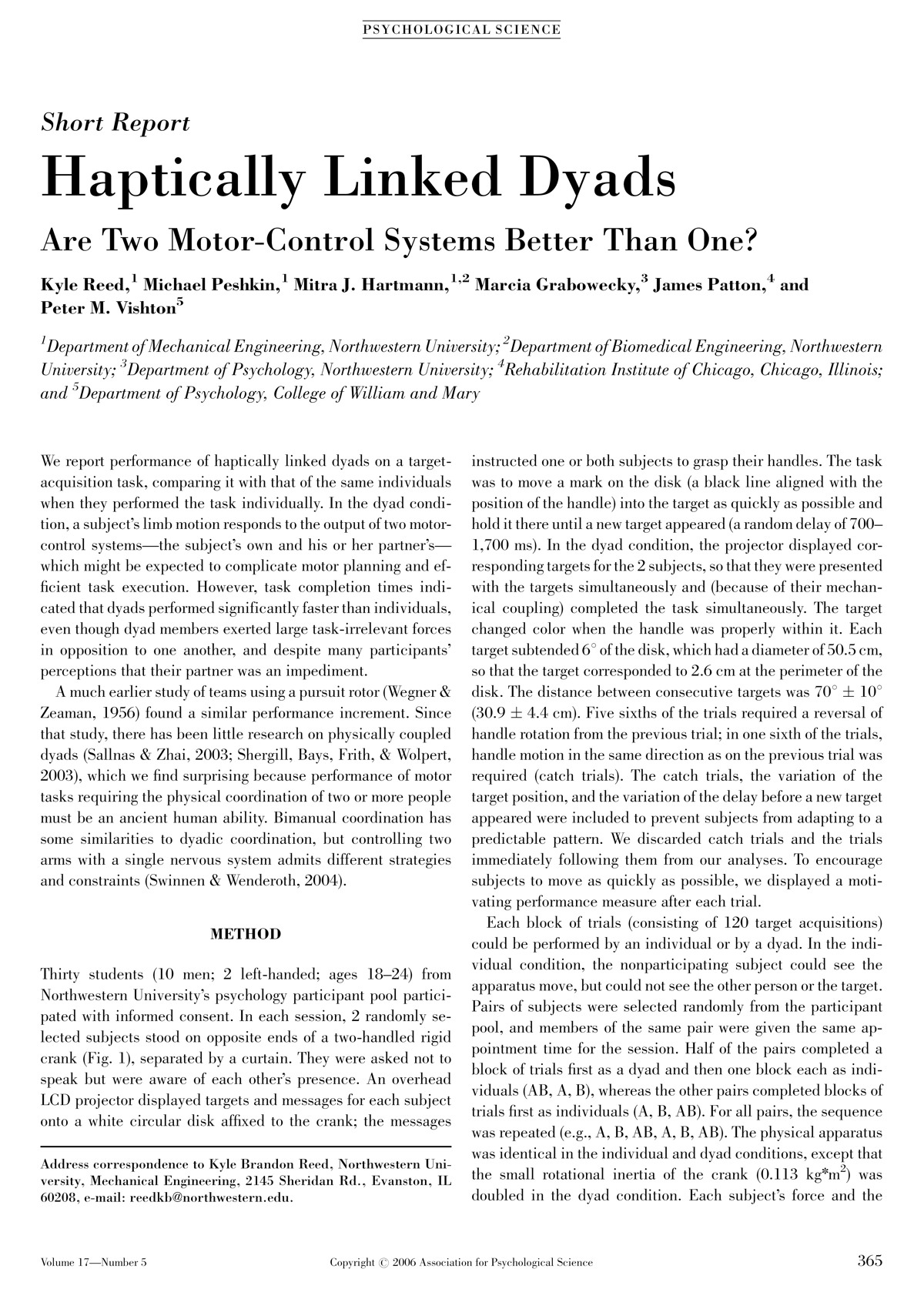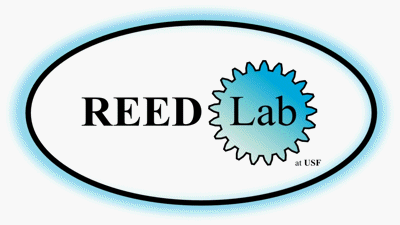|
|
Haptically Linked Dyads: Are Two Motor-Control Systems Better Than One?
Abstract - We investigated the dynamics of a shared physical task requiring speed and accuracy, in which the only communication between participants was via the task itself. Generally, people prefer to work alone on such tasks. However, on our one-degree of freedom target acquisition task, completion time measures showed that dyads performed significantly faster than individuals, even though the participants exerted large forces in opposition to one another, and despite many participants perceptions that the other person was an impediment. Force measurements showed an emergent specialization when dyads worked together; members concentrated their force production in either the acceleration or deceleration phase of the shared task, despite using no traditional forms of communication.
[ download pdf ]

|





